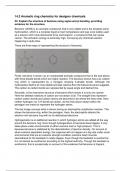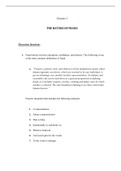Notes de cours
Lecture notes 14.2 Aromatic ring chemistry for designer molecule
- Cours
- Établissement
This assignment is written till distinction grade it has been marked but edited so you can use it for your Organic Chemistry Assignments.
[Montrer plus]










